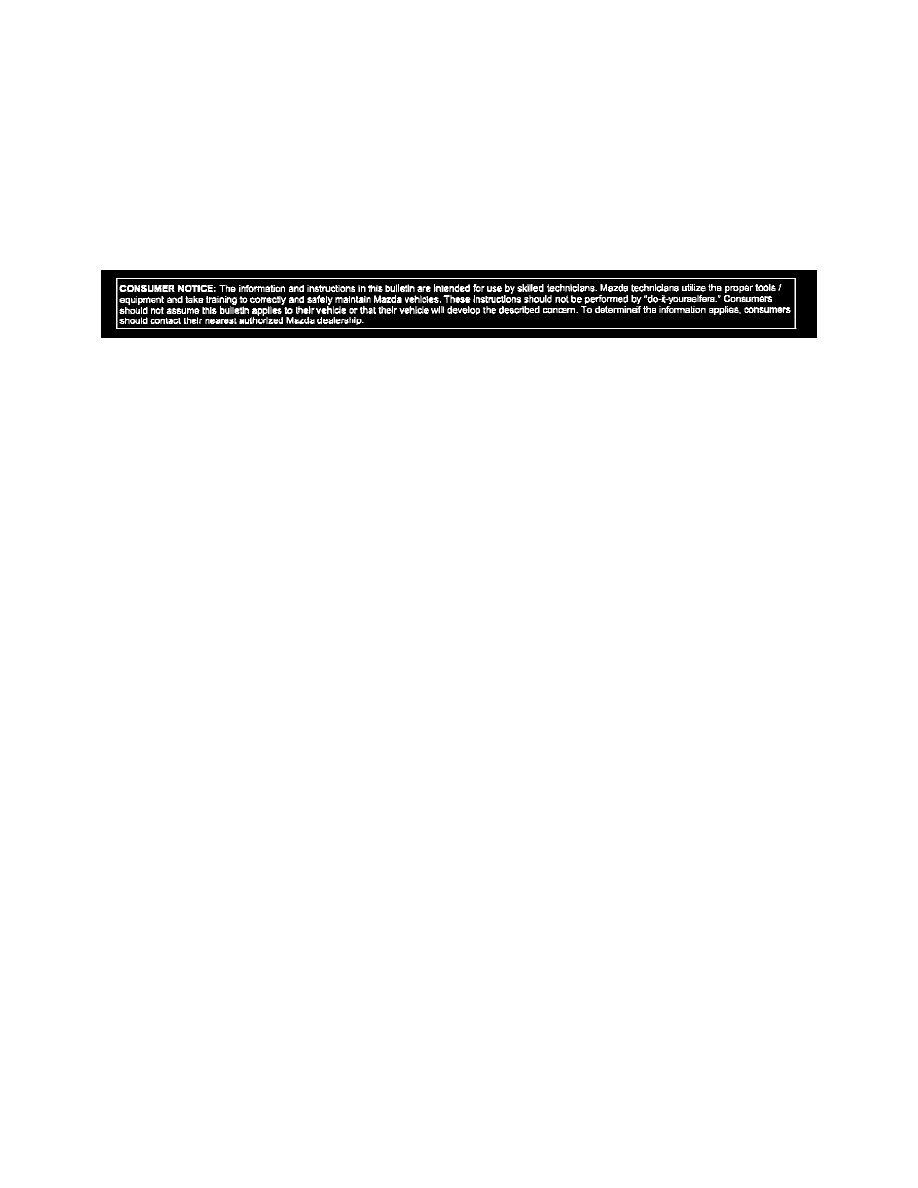MPV 2WD V6-3.0L SOHC (1992)

applicable workshop manual.
SYMPTOMS
A.
Carbon Accumulation (1992-95 929 & 1989-95 MPV) - Top of the engine knocking noise, occurs in time with crankshaft rotation during cold
engine start-up.
B.
Hydraulic Lash Adjuster (HLA) Noise (1989-94 MPV with a V6) - Top of engine chatter, several times faster than crankshaft rotation.
C.
Crankshaft Noise (1992 929) - Bottom of engine knocking noise, occurs in time with crankshaft rotation at normal operating temperature.
D.
Piston Slapping Noise (1992-93 929 & 1989-93 MPV with a V6) Top of engine noise, occurs in time with crankshaft rotation under load on
acceleration.
Disclaimer
Symptom A
SYMPTOM A. CARBON ACCUMULATION
SYMPTOM "A" APPLICABLE MODELS
All 1992 - 95 929 & 1989 - 95 MPV models with 2.6L and V6 engines.
SYMPTOM "A" GENERAL INFORMATION
If the engine noise is heard when starting a cold engine and decreases after the engine warms-up, carbon may have accumulated in the combustion
chamber and on the piston tops. Carbon accumulation reduces the clearance between the piston and the cylinder head, causing contact and noise during
combustion.
SYMPTOM "A" REPAIR PROCEDURE
Carbon accumulation can be eliminated by using Top Engine Cleaner. Carefully follow the instructions provided with the cleaner. A recommended
induction procedure follows:
1.
Operate engine at normal operating temperature then turn the engine off.
2.
Locate the canister purge control vacuum port at the intake manifold and attach one end of the feed hose. Use this port for even distribution of the
cleaner.
CAUTION:
Mazda Top Engine Cleaner must be fed into the engine through the correct vacuum port and at a feed rate of not less than 1.5 minutes per 5.5 fl. oz
(162.5 ML). Use orifice (p/n E5B6-13-986) in the feeding hose. A faster feed rate may result in liquid accumulating in a cylinder resulting in
hydraulic look-up and engine damage.
Supply your own feed hose (do not use the engine vacuum hose). Attach a pair of locking pliers (vise grips) to the hose to prevent suction while the
engine is cranking.
3.
Place the other end of the hose in the can of Top Engine Cleaner and restart the engine.
WARNING:
AN EXCESSIVE AMOUNT OF EXHAUST SMOKE WILL BE PRODUCED IN THE NEXT STEP. USE EQUIPMENT AND PROCEDURES
CONSISTENT WITH OSHA STANDARDS TO VENT THE SMOKE.
4.
Allow idle to stabilize. Then feed the cleaner into the engine by releasing the pliers and idling up and down (between 1500 - 3000) until 5.5 fl. oz.
(162.5 ML) of the can is used. Let the idle drop and the engine should stall. If not, turn the engine off.
5.
Let the vehicle sit for a minimum of one hour. Ideally, the chemical's cleaning ability increases the longer it is allow to saturate the carbon.
6.
Repeat steps 1 - 4 to flush the loosened carbon from the engine. This time DO NOT allow the engine to stall.
7.
Remove the feed hose and connect the original line.
8.
Take the vehicle on a test drive. Select a road or highway that will allow you to safely perform full throttle acceleration form a stop. This should be
done in a safe manner while observing posted speed limits. Perform standing stop acceleration at least twice in a 3 - 4 mile test drive.
